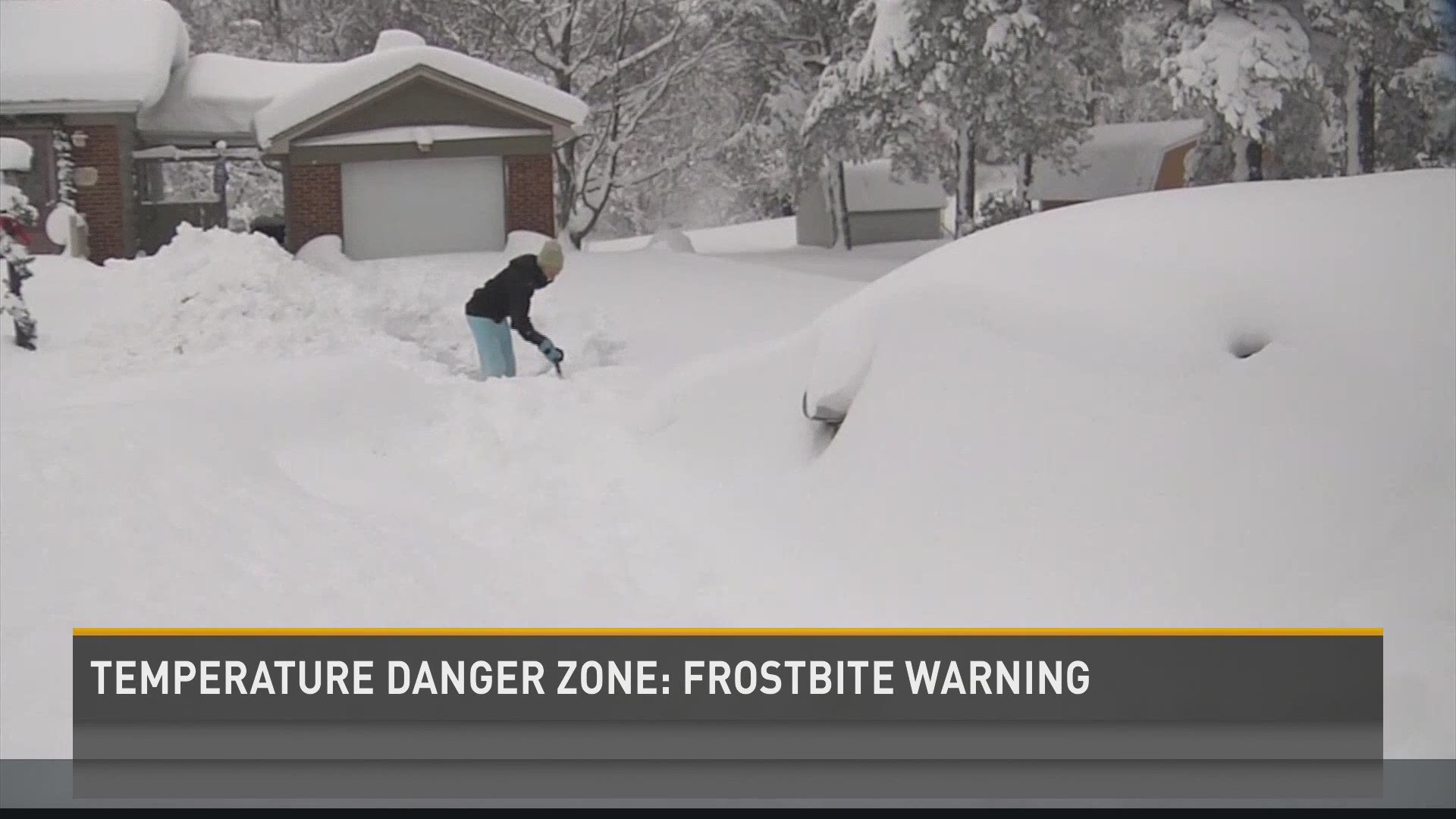PORTLAND, Maine (NEWS CENTER)-- With the plunging temperatures here to stay for while, those who plan on spending any time outdoors are reminded about the the dangers of frostbite, which can happen in a matter of minutes.
While your body combats the extreme cold by focusing body heat on your head and internal organs, your other extremities are left vulnerable. Body parts like your fingers, toes, and earlobes are often the first to experience frostbite, which includes a loss of feeling and color.
The chart below from the National Oceanic and Atmospheric Administration depicts how much colder the windchill can make that "feels like" temperature- dropping it by at least 10 degrees. In temperatures below zero, a person can be outside a maximum of 30 minutes before frostbite symptoms appear on exposed skin.

Frostbite and hypothermia aren't just risks for people, pets can also be adversely affected by the extreme cold, too. At Animal Refuge League of Greater Portland, staff members are limiting the animals' time outside and putting coats on dogs with shorter or thinner fur. Shelter representatives advise to do the same for your own dogs. If you have an indoor/outdoor cat, keep it inside while temperatures are severely low. Make sure barn cats have warm shelters to turn to. Also, if you have rabbits or similar pets, keep them indoors. Just like in the summer, shelter representatives also say don't keep animals alone in cars, the temperature will drop to harmful levels quickly once the car is turned off.
"The general rule of thumb is if it's too cold for you and your children, it's probably too cold for your pets outdoors so just be really aware of the temperature, the type of pet you have, their fur length, and making sure their exposure to the cold right now is appropriate for the type of pet," said Jeana Roth, Director of Community Engagement at the ARLGP.
Roth also says if you see a stray animal in your neighborhood spending too much time outdoors, shivering, or showing any sign of skin discoloration, call your local animal control officer to report it.


